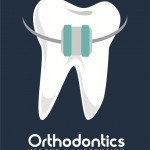
A period of retention is considered essential following active orthodontic treatment in order to maintain post-treatment stability. A recent Cochrane review update looked at a range of different types of orthodontic retainers and retentions strategies (Dental Elf – 5th Jun 2023). Recently studies have suggested that computer-aided design and computer-aided manufacturing (CAD/CAM) based fixed retainers may outperform conventional fixed retainers.
The main aim of this review was to compare the effect of CAD/CAM-based and conventional fixed retainers on the stability of treatment outcomes and periodontal health in patients undergoing orthodontic retention using fixed retainers.
Methods
The review protocol was registered in the PROSPERO database. Searches were conducted in the Cochrane Central, Embase, Medline, Web of Science, Scopus, LILACS and Google Scholar databases supplemented by searches in the journals, American Journal of Orthodontics and Dentofacial Orthopedics, the European Journal of Orthodontics, The Angle Orthodontist, and The Korean Journal of Orthodontics. Conference proceedings of the International Association for Dental Research, the Institute for Scientific Information, and the Conference Proceedings Citation Index, and dissertations from ProQuest were searched. Ongoing trials were explored from the WHO (through apps.who.int/trialsearch), the USA (via clinicaltrials.gov), China (through chictr.org. cn), and India (through ctri.nic.in). Randomised controlled trials (RCTs) comparing CAD/CAM fixed retainers and conventional fixed retainers were considered. Two reviewers independently selected studies extracted data and assessed risk of bias using the Cochrane Risk of Bias 2.0 (RoB 2) tool. The quality and certainty of evidence were assessed using the Grading of Recommendations Assessment, Development and Evaluation (GRADE) system. The outcomes were cast measurements of CAD/CAM-based and conventional fixed retainers, Little’s irregularity index (LII) and inter-canine distance (ICD), and arch length (AL) and periodontal indices plaque index (PI), gingival index (GI)). Meta-analysis and network meta-analyses were conducted.
Results
- 7 RCTs involving a total of 601 patients were included.
- The included studies were published between 2020 and 2022.
- 5 of the 7 studies used Nitinol retainer (Memotain) wires in the CAD/CAM groups.
- 5 RCTs only assessed the canine-canine mandibular dentition.
- Follow-up periods ranged from 6 months to 12 months.
- 1 study was considered to be at low risk of bias with 6 studies demonstrating some concerns.
- Network meta-analysis (NMA) showed no significant differences in inter-canine distance between CAD/CAM and conventional fixed retainers in mandibular retainers (5 studies 742 patients).
- However, for Little’s irregularity index, NMA (6 studies,574 patients) showed that single-stranded stainless-steel retainers were notably worse than Ni-Ti CAD/CAM retainers at 3 and 6 months, while multi-stranded stainless-steel retainers only diverged from CAD/CAM at the 6-month milestone, despite the overall clinical inconsequence of these changes.
- Meta-analysis found that CAD/CAM retainers were associated with a lower plaque index than traditional retainers but no significant difference in gingival index or arch length (see table below).
| Parameter | No, of studies (patients) | Mean Difference (95%CI) |
| Arch Length | 3 (296) | 0.00 (-0.04 to 0.03) |
| Gingival index | 4 (220) | 0.10 (0.03 to −0.22) |
| Plaque index | 4 (210) | 0.15 (0.01 to 0.30) |
- Failure rates did not differ significantly between CAD/CAM and other types of retainers in mandibular retainers, risk ratio = 97 (95%CI: 0.62 to 1.51) [2 studies, 226 patients].
- GRADE certainty for the outcomes was rated as moderate to low.
Conclusions
The authors concluded: –
In the short term, CAD/CAM fixed retainers show promise as an alternative to traditional retainers. They may enhance periodontal health, as indicated by lower plaque index scores than conventional retainers. However, extensive research is needed to determine the long-term durability and effectiveness of CAD/CAM retainers in orthodontic treatment, particularly regarding their failure rate. Until comprehensive evidence is available, the use of CAD/CAM retainers should be tailored for each case.
Comments
The authors pre-registered a protocol on PROSPERO and undertook an extensive database search for relevant studies. 7 RCTs were included in this review and all seven if these studies were included in a recent Cochrane review update which was looking at the broader question of retention strategies.It is interesting to compare the risk of bias assessment for the included studies across both reviews. No study was graded as being at high risk of bias while the Cochrane reviewers rated 4 of the 7 at high risk in the blinded outcome assessment domain.In relation to implications for practice the CAD/CAM retainers the Cochrane reviews said: –
Regarding new design and manufacturing technologies for fixed retainers, computer‐aided design/computer‐aided manufacturing (CAD/CAM) nitinol fixed retainers showed no clinically meaningful difference in stability and periodontal health at one year, and no difference in survival compared to analogue multistrand fixed retainers.
This is a less positive interpretation of the 7 studies than the authors of this paper suggest. Both the Cochrane reviewers and the authors of this new review highlight the need for new well-conducted studies with the Cochrane reviewers highlighting a number of features that should be included in any new studies. One of these is that studies should include at least wo years follow up, a criterion that none of the 7 studies in this review meets.
Links
Primary Paper
Bardideh E, Ghorbani M, Shafaee H, Saeedi P, Younessian F. A comparison of CAD/CAM-based fixed retainers versus conventional fixed retainers in orthodontic patients: a systematic review and network meta-analysis. Eur J Orthod. 2023 Sep 18;45(5):545-557. doi: 10.1093/ejo/cjad033. PMID: 37471113.
https://pubmed.ncbi.nlm.nih.gov/37471113/
Review protocol in PROSPERO
https://www.crd.york.ac.uk/PROSPERO/display_record.php?RecordID=412741
Other references
Dental Elf – 5th Jun 2023
